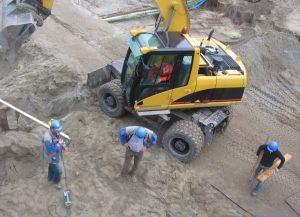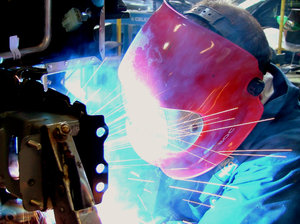Working directly with electricity can be dangerous. Working near any form of electricity is dangerous too. In fact, most workers may not be aware that they are exposed to electrical dangers that can cause injury in Boston and elsewhere.

When you think of workers in danger of electricity-related injuries, you might typically think of electricians, engineers and other related professionals. However, the truth of the matter is that people who work in offices and even sales people can also be exposed to electrical hazards.
Our Boston workers’ compensation attorneys understand that electricity has been recognized as a serious work hazard for a long time now. Yet it still goes unnoticed by a majority of workers. For this reason, the Occupational Safety and Health Administration (OSHA) pushes electrical standards to help protect employees who are exposed to dangers like electrocution, electric shock, fires and explosions.
Statistics reveal that there were nearly 28,500 employees in the U.S. who died because of work-related accidents from 2003 to 2007. Of these fatal accidents, contact with electricity was the 7th leading cause. Additionally, there were more than 13,000 employees who were injured in electricity-related accidents and had to take time off of work to recover.
It’s true that those working in construction see the most risks and injuries for electricity-related accidents. But it is equally true that employees of all types can be injured in these kinds of accidents.
Electricity Danger Warning:
-All types of electrical current can potentially injure you.
-Inspect tools and outlets before use each time to help to reduce the risks of injury.
-Make sure power tools are off before plugging them in. This is a common mistake that leads to hundreds of injuries every year.
-Dynamic electricity refers to the uniform motion of electrons traveling a conductor.
-Static electricity is when this force gathers on a surface because of contact with another surface or because of friction.
-Always use the right size fuse.
-If a power cord is broken or wires are exposed, do not use it. Toss it out.
-Electricity can’t travel through a pathway to and from a conductor that has been broken.
-If you have to work with electricity and a ladder, be sure that your ladder is made up of non-conducive materials, like wood.
-When you’re electrocuted, the electricity can hinder the functions of your body, meaning that it can stop the brain from sending electric signals to the rest of your body. This can result in serious, if not permanent, injuries and even death.
-Never work with electricity in areas that are damp or wet.
-If someone experiences a high voltage contact burn, they may suffer severe injuries to their internal bodily tissues. This is a condition that may not be detected by the outside appearance of the body.
Continue reading
 Massachusetts Workers Compensation Lawyers Blog
Massachusetts Workers Compensation Lawyers Blog









